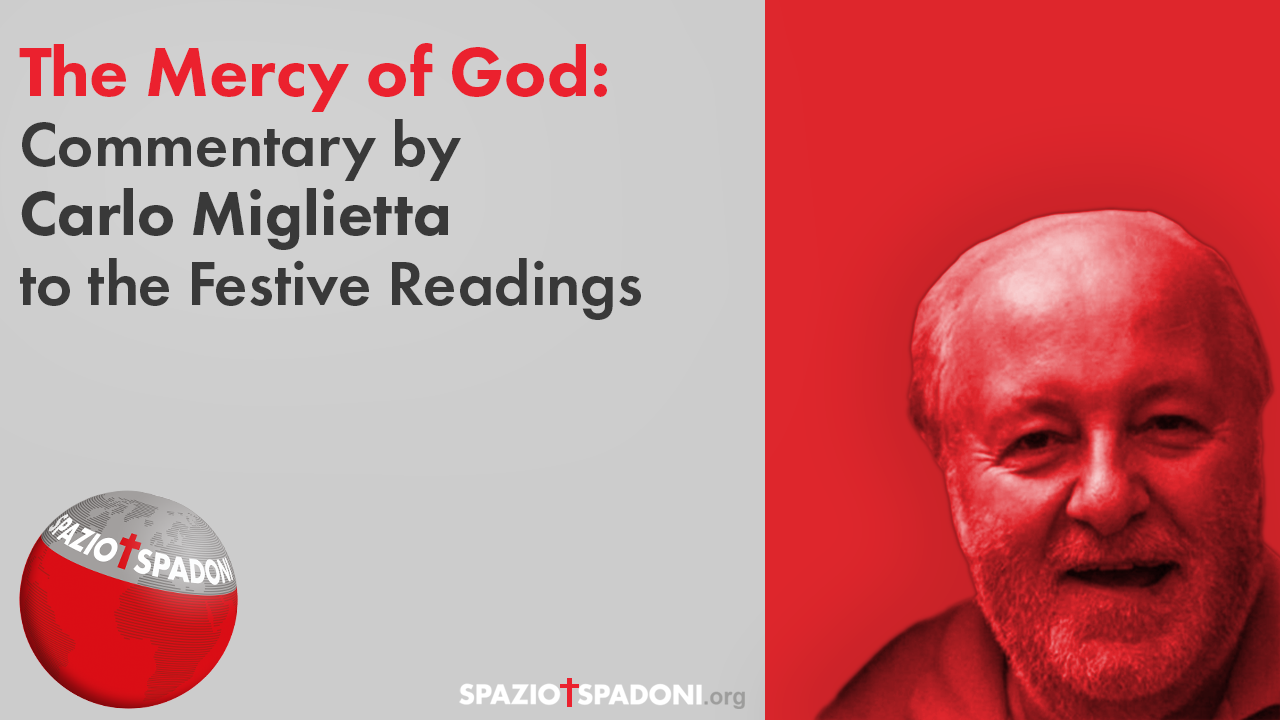
Palm Sunday: Passion of the Lord B – God Reveals Himself on the Cross
Readings: Is 50:4-7; Phil 2:6-11; Mk 14:1-15:47
The Cross, supreme revelation of God’s Love
Today’s liturgy, after presenting us with the fleeting triumph of Jesus’ entry into Jerusalem, leads us to contemplate the mystery of the Cross, the heart of Mark’s Gospel. The Cross is in Mark the supreme moment of God’s revelation: “then the centurion, seeing him expire like that, said, “Truly this man was the Son of God!” (Mark 15:39). For the Cross is the highest expression of God’s mercy for us, the climax of God’s stooping down to embrace and save humanity.
The Cross, “scandal…, foolishness” (1 Cor. 1:23)
Sadly, however, for us, the Crucifix is no longer “scandal…, foolishness” (1 Cor. 1:23), and at the same time a wonder before which to fall in moved adoration: by now we have become accustomed to the sight of this sacred symbol, which many now wear around their necks like any good luck charm, between a cornet and a four-leaf clover. Even in our churches, the Crucifixes are often pious depictions on which our eye is accustomed to rest: the Jesus who is affixed to them is perhaps serene and almost glorious, and so we miss understanding the ultimate miracle of God’s love. The crucified Jesus is no longer the one who “has no appearance or beauty to attract our gaze…. Despised and outcast by men…as one before whom we cover our faces” (Is 53:2-3).
We should still know how to be horrified before the Crucifix; the Crucifix should still disgust us, as when we see photographs of those martyred under the most heinous torture in Nazi concentration camps, or in the prisons of heinous terrorists or dictators. We are the only religion in the world that has as its emblem a person tortured by the cruelest tortures, by every macabre and insane means invented by human wickedness.
There is no pain that is not included in the sufferings of Christ.
But for this very reason every man, even the one who has suffered the most terrible violence, who is stricken by the most atrocious evil, can turn his gaze to the Crucified One to find in that God who is infused there the greatest understanding, the fullest solidarity. There is no pain that is not included in Christ’s sufferings, no evil that he has not taken upon himself: that is why he is truly the “God with us” (Mt 1:23). On Good Friday, the liturgy has Jesus say from the cross, “O all of you who go by the way, look and see if there is any pain equal to my pain!” On his “disfigured, undone face, … are printed the imprints of all the miseries of the world. A face that collects the record of all the tortures that men of all times will have to endure. The Body of Christ becomes the boundless continent of human pain. On that cross is the burden of those who can take no more…. Truly, with the cross Christ receives the sacrament of human pain. Here is He who “bears, bears, bears away our anguish” (K. Barth). And He also receives the burden of our sins…. (2 Cor. 5:21)… What a lightning rod, that cross… It is heavy the cross. For heavy is the cross of millions of creatures. And Christ, who bears them all, becomes “He who can no longer bear it” … (Luke 23:26). From that moment anyone can cry out “I can’t take it anymore!” He knows that there is Someone who understands him. Because he has tried” (A. Pronzato).
Contemplating the Crucified One
Only if every time we look at a Crucified One we still know how to be moved, to feel disgust for that “man of sorrows who knows well the affliction” (Is 53:3), to weep with anger and sadness, then we are able “to understand … what is the breadth and length and height and depth, and to know the love of Christ which surpasses all knowledge, so that you may be filled with all the fullness of God” (Eph 3:18-19).
